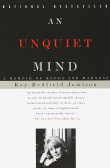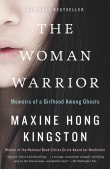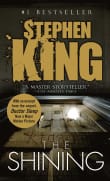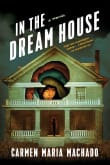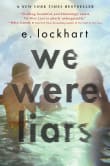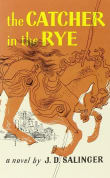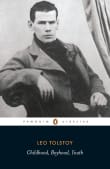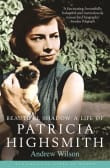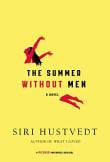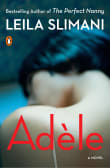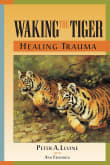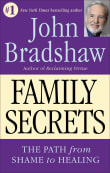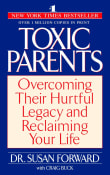The Bell Jar
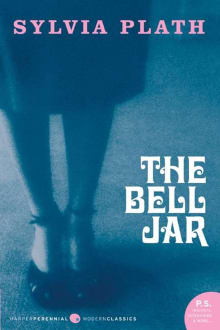
Book description
I was supposed to be having the time of my life.
When Esther Greenwood wins an internship on a New York fashion magazine in 1953, she is elated, believing she will finally realise her dream to become a writer. But in between the cocktail parties and piles of manuscripts, Esther's…
Why read it?
15 authors picked The Bell Jar as one of their favorite books. Why do they recommend it?

Plath's study of her own illness was raw and beautiful.

I love this because, in many ways, it is a kind of modern take on Sargasso Sea, with a liberal dash of Catcher in the Rye thrown into the soup: an exploration of what happens when you apply the same kinds of patriarchal oppression and expectations Antoinette suffered in the 19th century to a young 20th-century woman living in what is supposedly a more “progressive” and “modern” era.
Esther Greenwood’s unraveling is both brutally relatable and unexpectedly humorous at points, and there are images from it that are so starkly drawn that they stay embedded in your mind like…
From Jennifer's list on badass madwomen.

This novel gets a bad rap, but I found it quite funny. If you have personally struggled with a mental health disorder, then I think it is easy and rewarding to find the humor in it. Perhaps my favorite moment is when Esther Greenwood is wandering around her house with a string following behind her like a cat’s tail.
It is the contrast of absolute darkness and humorous light that makes this one so hopeful to me. Yet, it never dismisses the stark reality of Esther’s condition. Both are present.
From Steven's list on read after a mental breakdown.
If you love The Bell Jar...

While shadows intrigue me, I often find them a bit sad. Esther Greenwood, the narrator of Sylvia Plath’s famous novel, seems to agree. As the brilliant and talented Esther struggles against the shackles of a masculine world, shadows become a haven—a tantalizing space whose ambivalent darkness beckons with fear and desire.
For me, knowing the fate of the author herself only heightened the emotional appeal and resulting trauma of following Esther’s slow descent into the darkness.
From Erik's list on staring into the shadows.

In The Bell Jar, Sylvia Plath unscrews the top of her skull and invites us to peek inside. This is one of my favourite first-person narratives.
Considering Plath’s struggle with depression and her ultimate suicide, the book portrays the tribulations of a tortured artist in New York’s beatnik fifties. Plath’s lyrical language infuses the prose which appeals to my love of poetry.
From TP's list on stirring your heart and imagination.

Esther Greenwood, a bright and talented young woman, struggles with mental illness and thoughts of suicide.
The first psychiatrist she sees is unempathetic and prescribes a course of electroconvulsive therapy (ECT) without explaining it well beforehand, which frightens her and proves unhelpful. A serious suicide attempt sends her to several psychiatric hospitals. Finally, Esther comes under the care of Dr. Nolan, a caring, compassionate psychiatrist.
I like the way Dr. Nolan works effectively, explaining and then supervising another course of ECT and also providing psychotherapy. With such appropriate and skilled treatment, the results are good.
From Monica's list on good and bad psychiatrists.
If you love Sylvia Plath...

Back in my English major college days, I read an abundance of Victorian literature and American classics. Few made as big an impression as The Bell Jar, a book that settled into my psyche forever.
Initially, the book drew me in because I identified with the character—a female student at a small New England liberal arts college who aspires to work at a magazine in New York City. But it was Plath’s odyssey into depression that jumpstarted my interest in the intersection of chaos and genius.
I began asking questions: How can a brilliant literary mind be tortured by insecurities?…
From Claudia's list on how our chaotic, imperfect minds crackle with genius.

The Bell Jar is Sylvia Plath’s answer to J.D. Salinger’s Catcher in the Rye for women.
In today’s modern world, where we no longer have to view ourselves and our lives through the lens of white men, The Bell Jar takes the reader through a journey of self-discovery and madness in America in the 1960s; a time of change, war, uprising, and the second wave of feminism. A must-read for any woman who has questioned herself, or her sanity, along the way.
From Michelle's list on young adult books for women of all ages.

First published in 1961 under the name Victoria Lucas, The Bell Jar describes Esther Greenwood’s suicide attempt and subsequent “nervous breakdown,” loosely based on the author’s own experiences. With its wry, mordant humor, memorable scenes, and unexpected observations, the book has become a classic, its status tragically affirmed by Plath’s own suicide in 1963. Like many young women, I read it in my late teens, but I’ve returned to it more than once over the years. With time, the book resonates on different levels. Now, I identify less with Esther and admire her more. Only the second part of the…
From Mikita's list on psychiatric hospital by women who spent time there.

This is an honest, eloquently told tale of a young woman's struggle with depression in a time (the 1950s) when few seemed to understand the illness, much less comprehend how to treat it. Of course, knowing enough of Plath’s life, it is challenging to separate the source from Esther Greenwood, the novel’s protagonist, since there are said to be close parallels with Plath's own experiences, but ultimately the quality of the writing transcends the morbidity and makes the journey of Esther quite rewarding.
From Daniel's list on character and personal journeys.
If you love The Bell Jar...
Want books like The Bell Jar?
Our community of 12,000+ authors has personally recommended 100 books like The Bell Jar.



